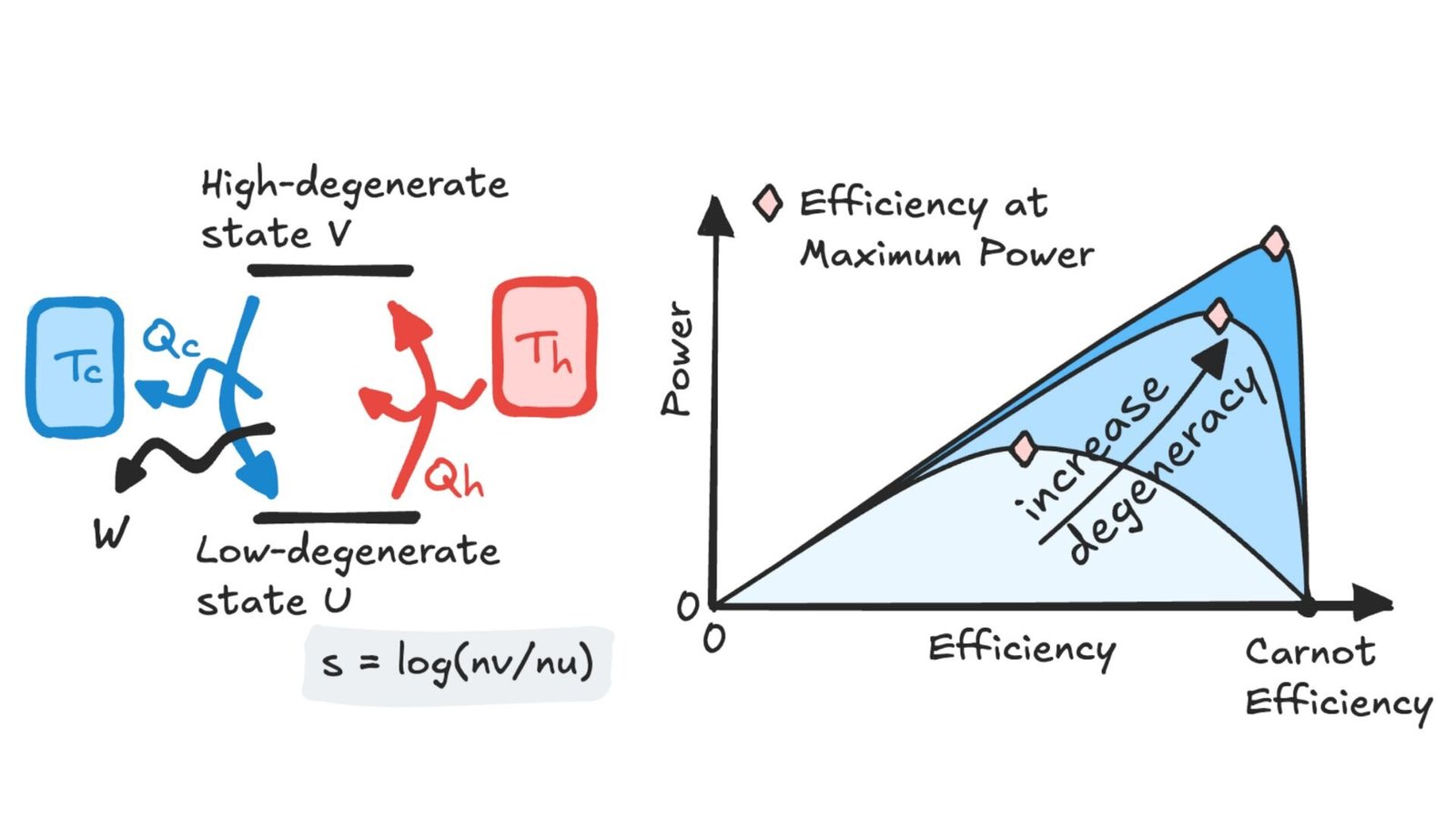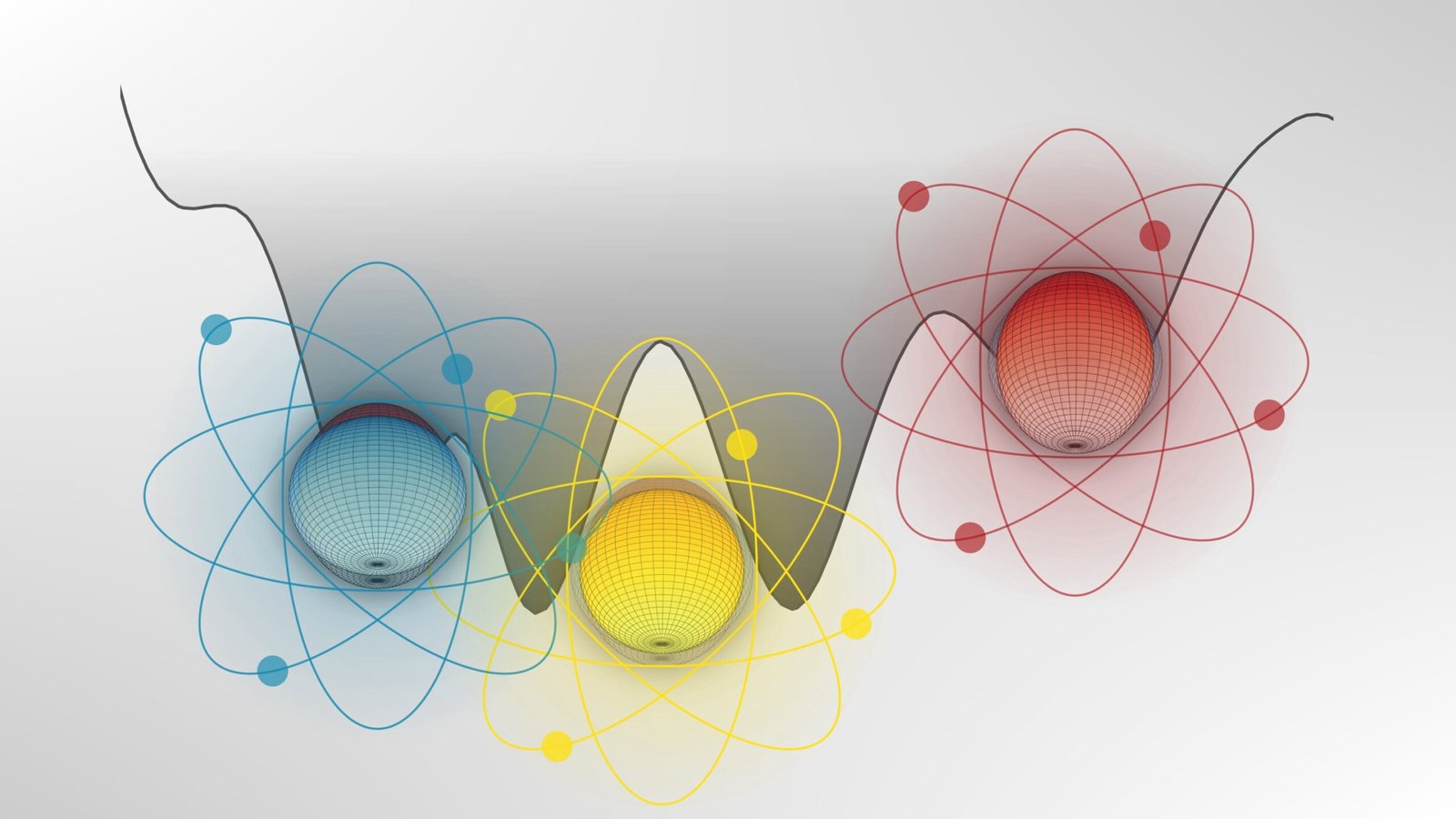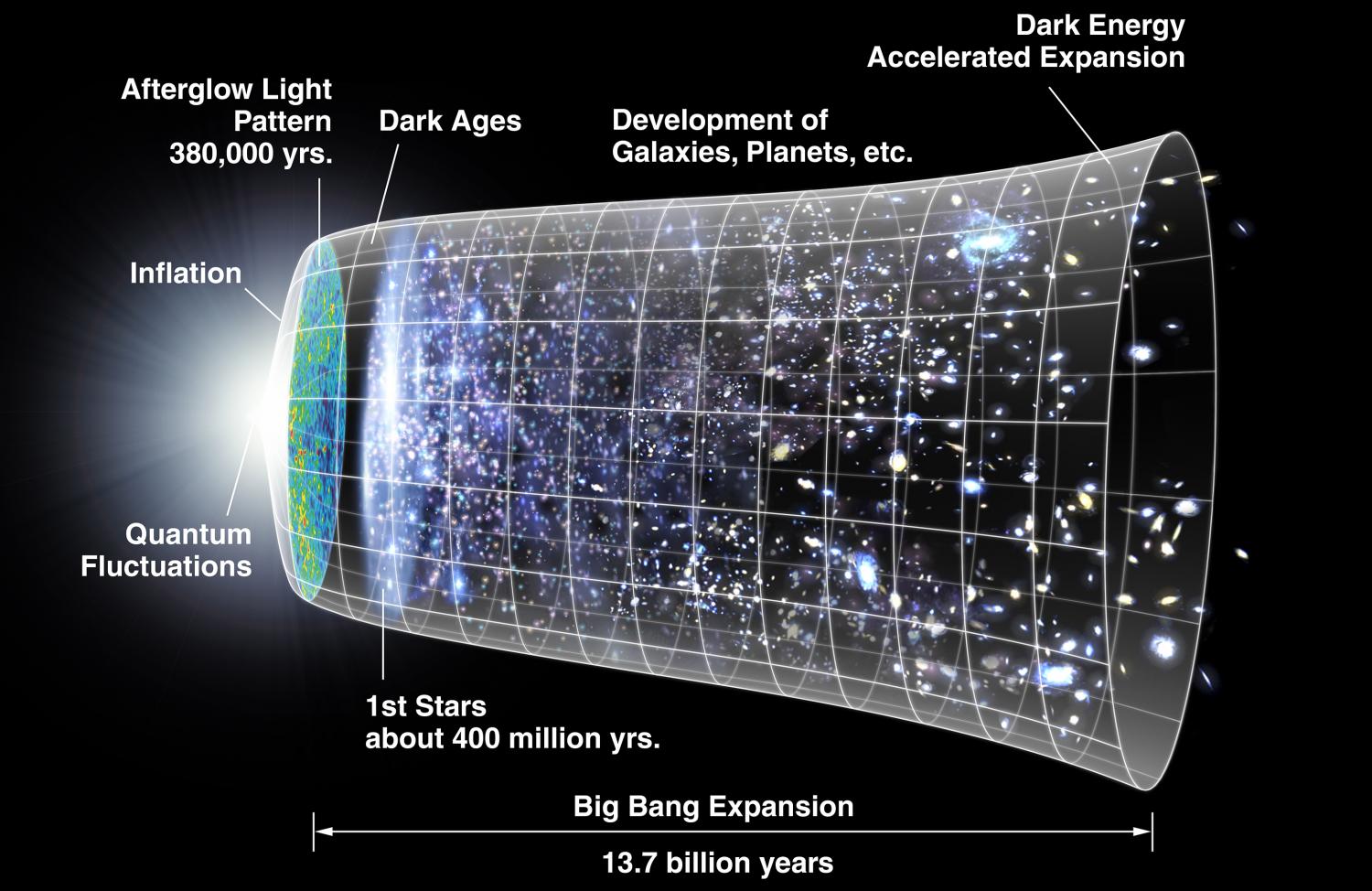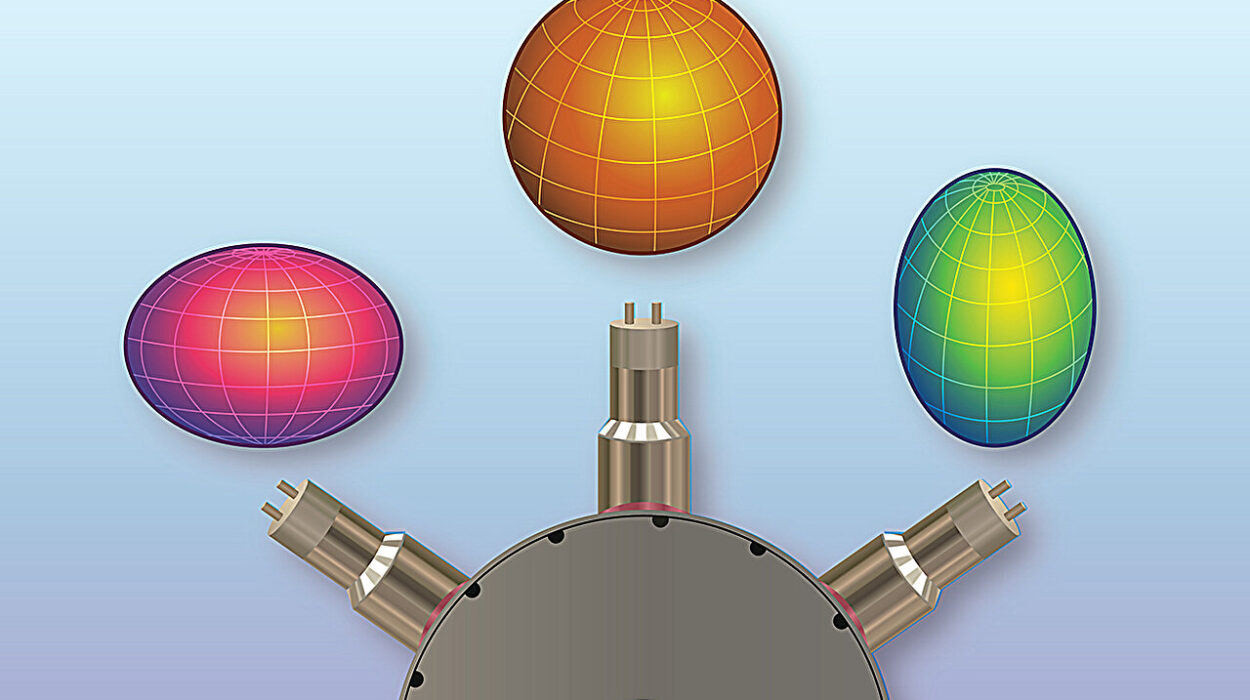For centuries, the principles of thermodynamics have guided the design and operation of heat engines, systems that convert thermal energy into useful mechanical work. Central to thermodynamics is the Carnot heat engine, which operates between two temperature reservoirs—one hot and one cold—to convert heat into work. In its ideal form, the Carnot engine achieves maximum efficiency by maintaining a perfectly reversible thermodynamic cycle. However, real-world engines invariably fall short of this ideal due to irreversibilities and energy losses. A new study published in Physical Review Letters has shaken the foundations of classical thermodynamics, demonstrating that it is theoretically possible to design a heat engine that achieves both maximum power output and efficiency approaching the Carnot limit. This groundbreaking discovery challenges long-held assumptions and offers new possibilities for the design of heat engines that could outperform existing models.
The Carnot Engine and Its Limitations
The Carnot engine serves as the benchmark for thermodynamic efficiency. This heat engine works by extracting heat from a hot reservoir, converting part of it into work, and rejecting the remainder to a cold reservoir. The process is carried out through a thermodynamic cycle known as the Carnot cycle, which consists of two isothermal (constant temperature) processes and two adiabatic (no heat exchange) processes.
In the idealized scenario, the Carnot cycle is completely reversible, meaning no energy is lost to friction, heat dissipation, or other inefficiencies. Under these conditions, the engine achieves maximum efficiency, and its performance is described by the Carnot efficiency: ηC=1−TCTH\eta_C = 1 – \frac{T_C}{T_H}
Where ηC\eta_C is the efficiency, TCT_C is the temperature of the cold reservoir, and THT_H is the temperature of the hot reservoir. However, in real-life applications, no engine operates with perfect reversibility. Irreversibilities—such as friction, heat losses, and other non-ideal factors—reduce the efficiency of any real engine below the Carnot limit.
Furthermore, a fundamental challenge arises when attempting to approach the Carnot efficiency: the power-efficiency trade-off. If a heat engine operates too slowly to maximize power output, it can achieve efficiencies close to the Carnot limit, but this comes at the cost of power generation. Conversely, generating significant power typically involves sacrificing efficiency, as real engines must operate faster, increasing losses and reducing efficiency.
A New Approach: Biochemical Heat Engines
The study’s authors, Assistant Professor Yu-Han Ma from Beijing Normal University and Dr. B. Shiling Liang from the Center for Systems Biology Dresden, have addressed this fundamental dilemma by exploring a novel type of heat engine: the biochemical heat engine. The concept emerged from a discussion between the two researchers at the end of 2022, when Dr. Liang made a surprising discovery during his early work.
Dr. Liang’s previous research on polymer folding models led him to develop a minimal biochemical heat engine that demonstrated the potential to exceed the accepted limits on engine efficiency at maximum power. This unexpected finding pushed him to collaborate with Professor Ma, who had been investigating how degeneracy—the number of possible microscopic states corresponding to a given energy level—could enhance the performance of heat engines.
In the study, the researchers focused on a system where degenerate energy levels played a crucial role. Degeneracy refers to a situation in which multiple configurations or states correspond to the same energy level. This concept has been known to have powerful implications in statistical mechanics and quantum systems, but its role in thermodynamics has remained underexplored until now.
The Role of Degeneracy in Maximizing Efficiency
The researchers’ model includes two energy states: a low-energy state and a high-energy state. Interestingly, the high-energy state has a much greater number of possible configurations, making it highly degenerate. The heat engine operates through two reaction pathways:
- ATP-hydrolysis-driven reaction: This reaction occurs at low temperatures and involves the use of ATP (adenosine triphosphate), the primary energy carrier in biological systems, to drive the system from the low-energy state to the high-energy state.
- Spontaneous transition: At high temperatures, the system naturally favors the high-energy state because it can access a much larger number of possible configurations, making this transition more likely. Importantly, this spontaneous transition does not require ATP and occurs without external energy input.
At lower temperatures, the system relies on ATP to transition to the high-energy state, while at higher temperatures, the system naturally reaches the high-energy state without ATP involvement. The key insight is that, as the system size increases, the high-energy state can accommodate more and more configurations, leading to sharp transitions between energy levels. These first-order phase transitions—sharp transitions with minimal energy loss—are critical to the engine’s performance.
Dr. Liang noted, “By constructing a minimal model incorporating this feature, we could demonstrate how it breaks conventional thermodynamic bounds and reveal the physical mechanism behind collective advantage.”
Breaking the Power-Efficiency Trade-Off
The biochemical heat engine demonstrated by the researchers is capable of operating with maximum power output while approaching Carnot efficiency. This was achieved by utilizing high-degeneracy states, which significantly enhance the performance of the heat engine. As the system size increases, the power output scales linearly with system size, and the efficiency approaches the Carnot limit.
The degeneracy principle in heat engine design represents a major breakthrough. Professor Ma explained, “Engineering systems with high-degeneracy states can significantly enhance heat engine performance.” This principle is similar to the role of the Carnot engine in guiding the development of practical heat engines for centuries. Even if perfect degeneracy isn’t achievable, increasing degeneracy can still be a powerful strategy for improving heat engine performance.
The findings also challenge a long-standing thermodynamic principle known as the “1/2-universality principle,” which posits that heat engines operating in the linear response regime (i.e., with small temperature differences between the hot and cold reservoirs) can only achieve half the Carnot efficiency at maximum power. The researchers demonstrated that this universality does not hold in systems with high degeneracy, where the efficiency at maximum power can exceed the traditional bounds.
Professor Ma emphasized, “Our research shows this universality is violated in the limit of large degeneracy. The order of taking the limits of the Carnot efficiency and the degeneracy affects the proportionality coefficient of the efficiency at maximum power with respect to the Carnot efficiency. This implies that when the system has a diverging intrinsic quantity, some conventional thermodynamic constraints may need to be re-examined.”
Implications for Biological and Synthetic Systems
One of the most exciting aspects of this study is its relevance to biological systems. The biochemical heat engine presented in the study is not just a theoretical construct but can potentially be realized in biological environments. The system operates in a way similar to the biological synthesis of ATP, a crucial energy source for cellular functions. This suggests that biopolymers, which naturally possess highly degenerate unfolded states, could serve as promising candidates for constructing real-world heat engines with these properties.
Dr. Liang pointed out, “Biopolymers are promising candidates for realizing this type of heat engine, as they naturally possess highly degenerate unfolded states, which could facilitate the kind of phase transitions necessary for achieving high performance.”
Looking Ahead: Practical Applications and Challenges
While the theoretical framework for a high-efficiency biochemical heat engine has been established, the challenge remains to find practical systems that exhibit these properties. Researchers must now explore materials and biological systems that could harness the power of degeneracy to achieve Carnot efficiency while maintaining high power output.
The discovery opens new avenues for sustainable energy generation and energy-efficient technologies, where the principles of degeneracy and phase transitions could be applied to design heat engines that are both powerful and efficient. The potential applications range from biological systems to synthetic materials, with implications for everything from nano-engineering to the development of more efficient industrial engines.
In conclusion, this study represents a paradigm shift in the field of thermodynamics, offering a new pathway for creating heat engines that break the longstanding trade-off between power and efficiency. By harnessing the power of degeneracy and phase transitions, the researchers have set the stage for a new generation of heat engines that could push the boundaries of energy conversion technology.
Reference: Shiling Liang et al, Minimal Model for Carnot Efficiency at Maximum Power, Physical Review Letters (2025). DOI: 10.1103/PhysRevLett.134.027101. On arXiv: DOI: 10.48550/arxiv.2312.02323






